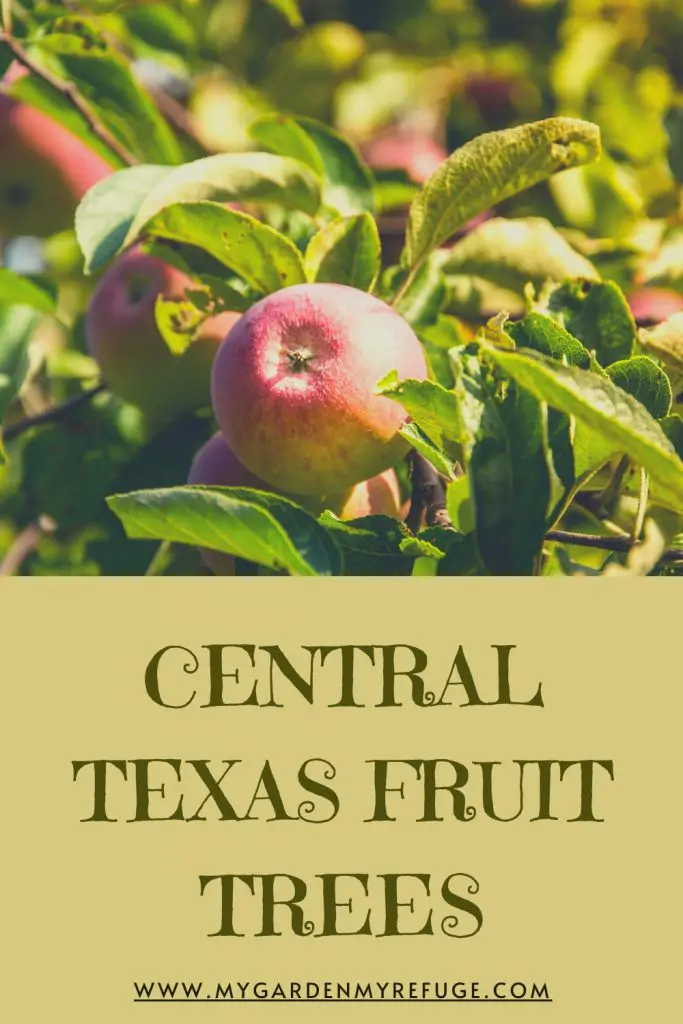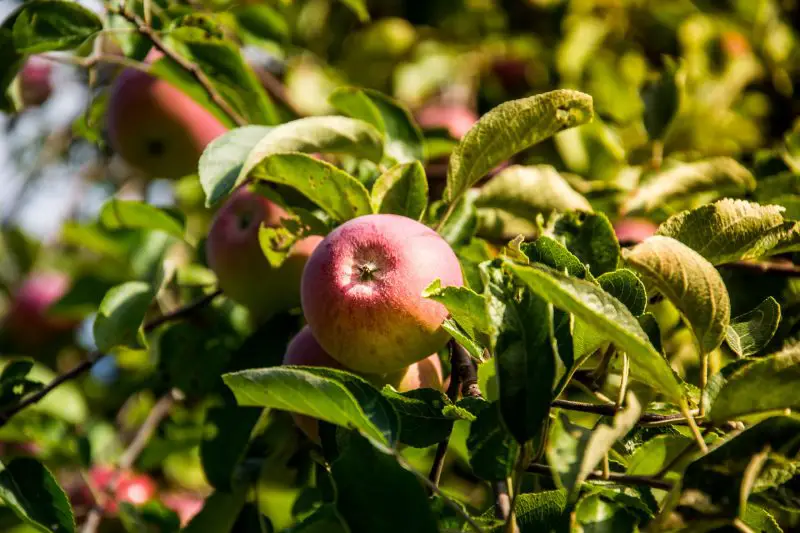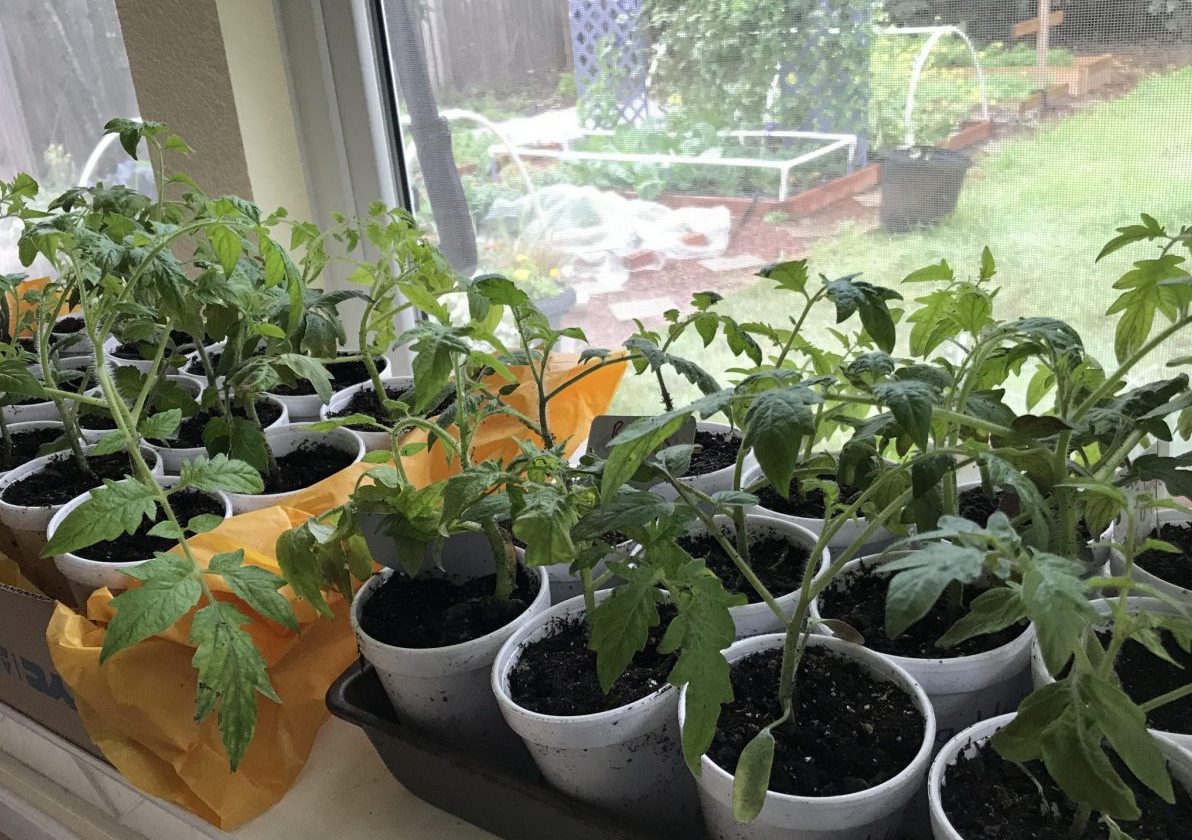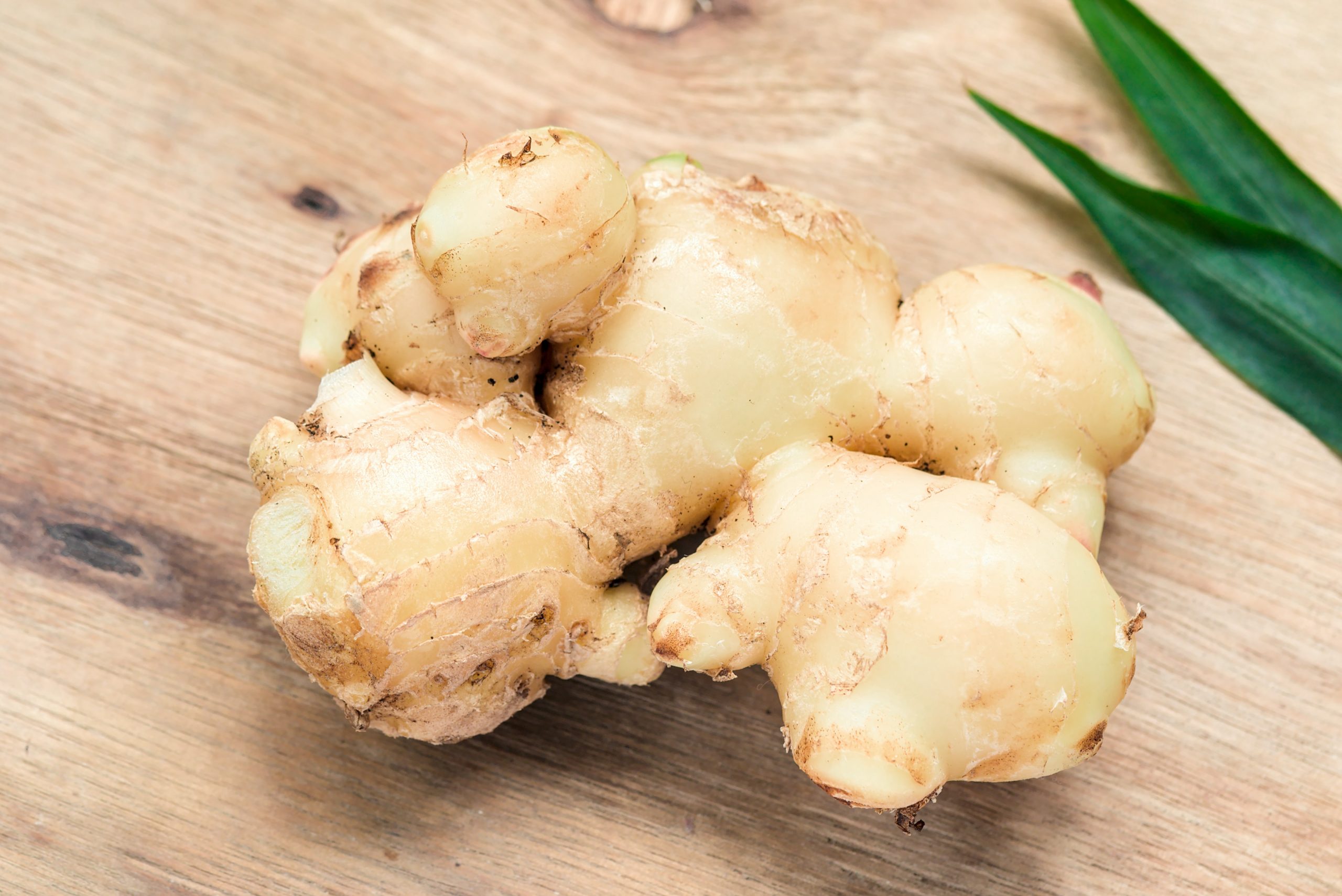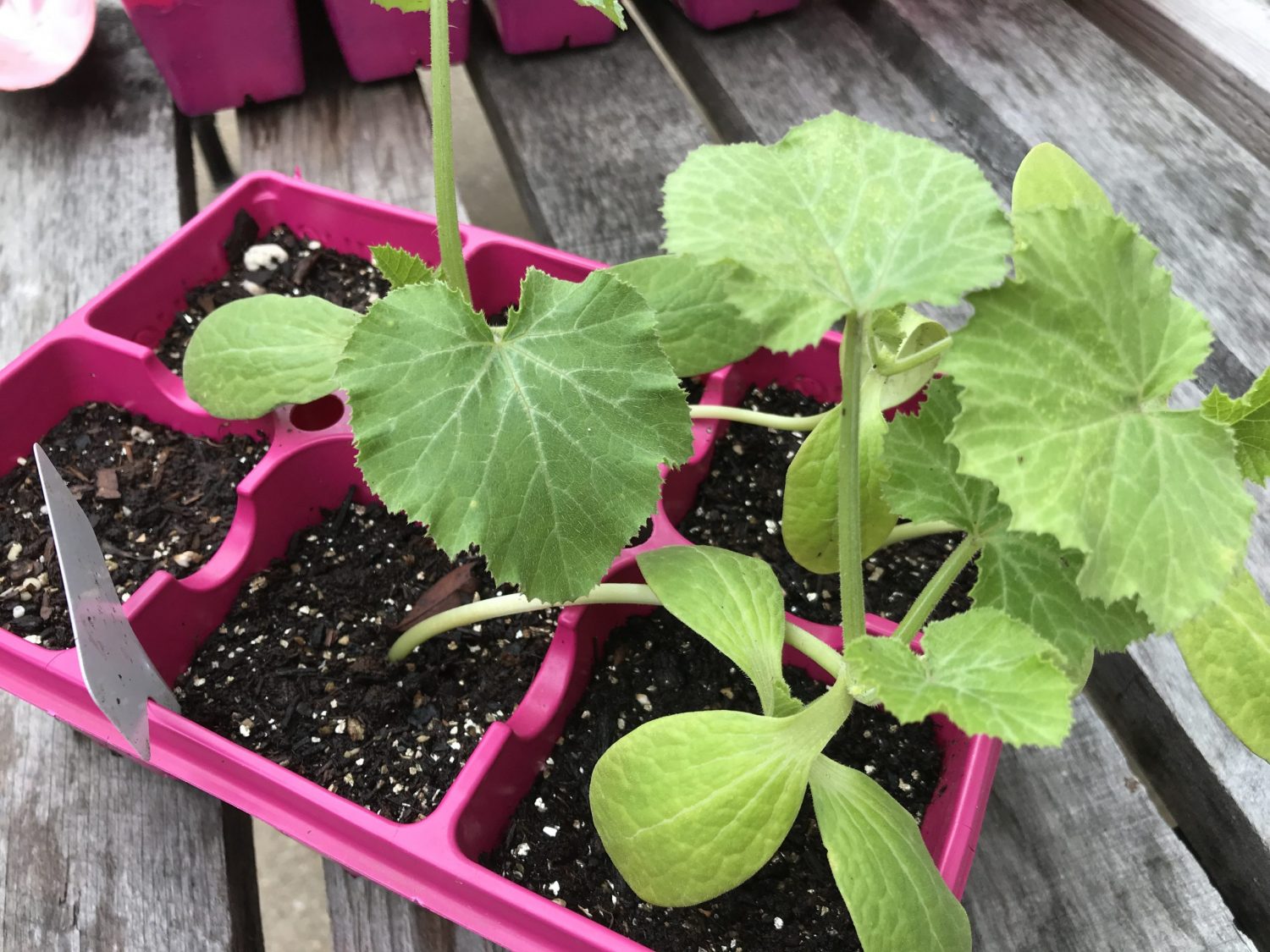Disclaimer: This post may contain affiliate links. Read the full disclaimer here.
The thought of picking your fruits steps away from your kitchen is fascinating. Yet, it can become a frustrating chore if not done correctly. Therefore, you should do your homework before investing in fruit trees, no matter where you live. Growing fruit trees in Austin and central Texas areas can be challenging. So, here is a complete guide highlighting the essential points every home gardener should know.
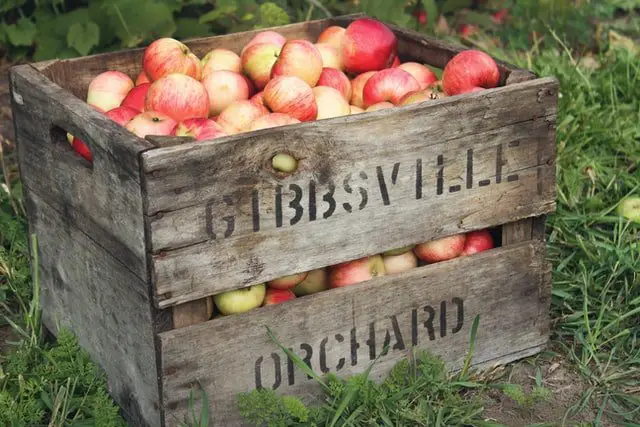
Is it worth it to grow fruits in your backyard?
Before you head to the nursery or order your favorite fruit trees online, you should ask yourself if it is worth the trouble to have them in the first place. There are different reasons why homeowners would want to have fruit trees. The most evident one is to produce enough fruit that will allow them to skip the grocery store. The second is that many assume fruit trees are the easier way to grow some of their food with the least effort.
Will a fruit tree produce enough fruit to feed a family?
The short answer is yes, one tree can produce enough fruits to feed a family. The long answer is that you should consider two things before dreaming of a bountiful harvest. First, most fruit trees take more than five years before getting any large crop. Second, remember that birds and squirrels will be the first to serve themselves.
It would be best if you planned to live more than five years in this property and be prepared to face the competition.
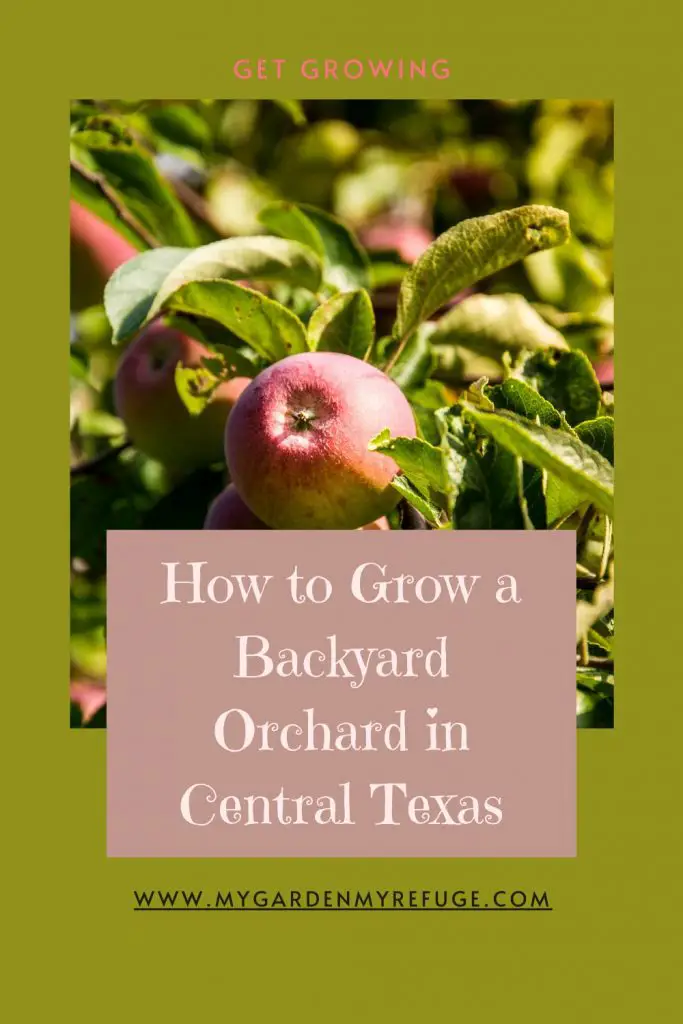
Do fruit trees need a lot of work?
Contrary to common belief, fruit trees need a moderate amount of care. It might not be as frequent as a vegetable garden would require, but enough to keep you thinking about it. Proper fruit tree care starts the day you purchase one, planting location, fertilization, support, disease, and pest management. Carry on reading to learn more about each task.
How to choose the right fruit tree for central Texas?
You might think that choosing a fruit tree relies on its name only. However, it is crucial to understand that a pear tree that grows well in the north might not be the right one for the south since each region has an environmental factor that makes it adequate for a tree to survive.
1- Soil requirements
- Soil Type: Central Texas soil is mostly clay and lies on limestone, which may be challenging for a tree to grow well. Your best bet is to plant them in raised beds. A typical fruit tree needs two to three feet of good soil to thrive.
- Soil pH: Many fruit-producing trees and shrubs require acidic soil to produce. Central Texas soil is mainly alkaline, so choose trees that do not need acidic soil.
- Poor soil: Austin soil’s high pH and phosphorous content prevent trees from getting adequate nutrients. You will have to provide supplemental feeding regularly.
2- Chill Hours
Chill hours are the number of hours a tree gets where temperatures range between 45F and 32F. During this time, the tree goes dormant with the help of growth-inhibiting hormones. The latter needs a certain period of low temperatures to break down to allow new buds to appear.
Each fruit tree variety has its chill hour index. Some need up to 1000 of cold while others only require 200. Central Texas is in the 600-hour range. Planting trees in a region with the wrong chilling hour number will result in low production, low fruit quality, and risk of freeze damage. Texas A&M put together valuable information and tools to determine the correct chill hour for your area. Check it out over here.
3- Self-pollinating
Some fruit trees need to grow in pairs to ensure pollination. Check the label for self-fertile varieties that do not need a sister tree to produce.
4- Disease resistance
Many diseases affect different fruit trees, and finding yourself battling one is no fun. Viruses, fungi, and root rot are the leading cause of diseases.
Common diseases in Travis County are:
- A soil-borne fungus causes cotton root rot. It affects apples and pears primarily.
- Plum Curculio is a beetle that damages fruits. It attacks in early spring and can ruin the whole harvest. OthItso attacks apples, pears, peaches, and cherries.
5- Water
Most fruit trees need supplemental water, especially during the first year after planting. Make sure to set up proper irrigation for your plants. Watering should be around the drip line, where the tree canopy ends.
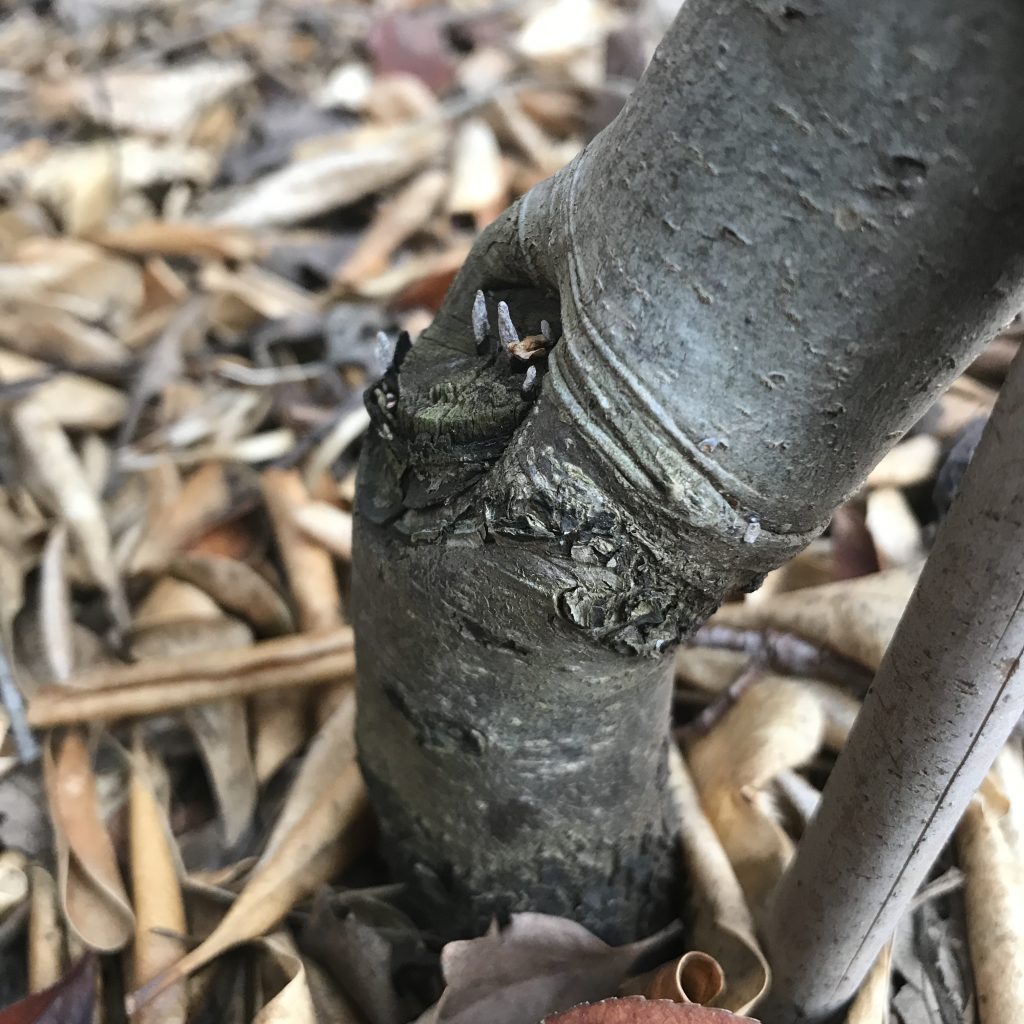
Grafted fruit trees
Grafting is an old technique of attaching a tree limb to the trunk of another. The latter is also called the rootstock. Some reasons why grafting is helpful in agriculture:
- The rootstock will determine the final size of the tree full, semi-dwarf, and dwarf. Each size fits a specific situation. As an example, dwarf trees are better suited for commercial use.
- Using a rootstock that is resistant to a particular disease helps improve production.
- A non-grafted fruit tree would take ten years to produce, while a grafted one starts producing in about four years.
Note: Any new growth below the graft line is from the rootstock, which may not be productive.
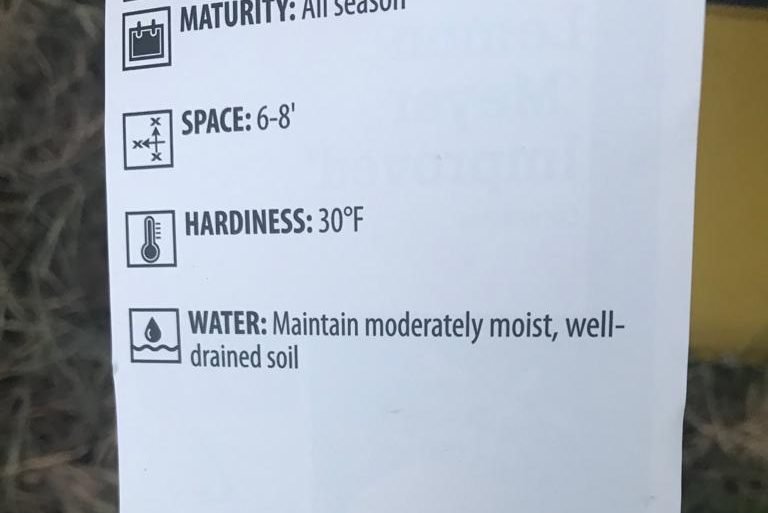
Reading a tree’s name tag?
When shopping for fruit trees, pay attention to the name tag. It sums up all the necessary information mentioned above.
- The picture: some ornamental trees have the name of a fruit tree, so make sure you see a picture of the expected fruit. Examples of confusing names are flowering pear, fiddle leaf fig, and cherry blossom. Although these are fruit names, they are ornamental trees.
- Pollination: many fruit trees need a companion from the same family to ensure pollination. If you have no space in your garden, look for self-fertile.
- Maturity size: make sure you provide enough space for the new tree.
- Disease resistance: knowing that your tree is disease-resistant will give you peace of mind.
How to care for a fruit tree?
1) Planting
When to plant fruit trees?
The best time to plant a tree in central Texas is fall. Having cool temperatures and more expected rainfall will help establish the tree faster. It is also the best time to do this kind of labor. Fruit trees are sold in two forms bare-root and potted. The first is more affordable and usually smaller in size.
How to plant fruit trees?
- Prepare the planting hole. It should be as big as the root ball.
- Test the drainage by filling the hole with water, then monitor the time it takes to drain. Good drainage is less than 12 hours.
- It is controversial whether or not to add amendments to the planting hole. Each side has its valid arguments, so apply your best judgment.
- Shake off the existing soil on the roots.
- Place the tree with its trunk base at the soil level.
- Do not coil the long roots; instead, clip them off.
- Backfill the hole with native soil, pressing it down slightly to remove any air pockets.
- Prune the tree by a third to focus its energy on establishing the root system.
- Water thoroughly.
2) Watering
Adequate watering is crucial for tree establishment and overall health. The root system absorbs water and nutrients in addition to anchoring the tree. Feeder roots extend beyond the drip line and expand through the topsoil, while thicker roots try to go deeper around the trunk. As most people think, you should know that a tree does not have one big long taproot that goes deep down.
When watering, water should soak each layer of the soil for the roots to absorb it. Water once a week for an extended time, allowing soil particles to soak in the water. You may want to create a furrow around the tree, fill it with water, and then give it time to drain in. Note that sprinkler systems do not supply enough water for trees unless a tree bubbler is connected. And the time you need to water the lawn is not the same for trees.
3) Fertilizing
Fertilizing depends on the variety and the age of the tree itself. Always follow directions on the product label, and avoid fertilizing at the peak of summer heat.
- The first year: You should fertilize in May when active growth appears.
- The second year: Fertilize in spring by broadcasting it around the tree away from the trunk.
- The third year: Fertilize twice as much as the previous year in spring.
- The fourth year: Fertilize once a year around the drip line.
4) Pruning
Why?
- Aerates the tree, increasing airflow and preventing disease spread.
- Opening up the tree allows sunlight to reach all branches.
- Concentrates tree energy into making more substantial limbs and better fruit quality.
When?
Always prune during the dormant time of the tree. Mostly that starts from fall till late winter, right before new buds appear. Pruning during active growth will encourage new undesired growth defeating the purpose of pruning.
What?
- New growth from old cuts.
- Branches that are crossing each other.
- Limbs that are growing downward.
- Branches that are growing inwards.
- Thin and weak branches.
What is thinning?
Thinning is removing fruits at the early stages of development, leaving only a few. While this may seem counterintuitive, it does help the tree produce better fruit quality.
- A tree with more fruits than it can handle will drop most of them, resulting in a small harvest.
- Having fewer fruits on the tree concentrates the energy on making them more prominent.
- Loaded tree branches risk breaking due to the weight of the fruits.
Top Fruit trees for Austin and surrounding central Texas
Easy fruit trees to grow in Central Texas
The following is a list of the most common trees to grow in central Texas. Texas A&M provides a more extended list here.
- Apples
- Figs
- loquats
- Mulberry
- Olives
- Pears
- Peaches
- Persimmon
- Plums
- Pomegranate
- Raspberry (bush)
- Blackberry (bush)
- Goggi berry (bush)
- American elderberry
- Barbados Cherry
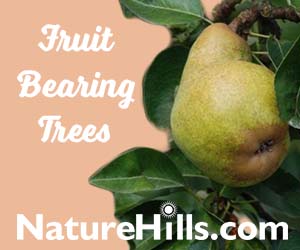
Trees that grow in central Texas with some extra care
Blueberries require acidic soil and central Texas soil is alkaline. You may try growing them in pots, keeping the soil acidity level right.
Citrus trees need special treatment to survive in central Texas. You will have to plant them in pots to bring them in during cold spells. They also need frequent feeding every other month to ensure production.
Conclusion
There is more to growing fruit trees in the home garden. This article is only a scratch on the subject, hoping to simplify it for the newbies. Texas A & M website does not skimp on any information you might seek. I encourage you to read about each aspect of the subject thoroughly before committing to growing fruit trees.
